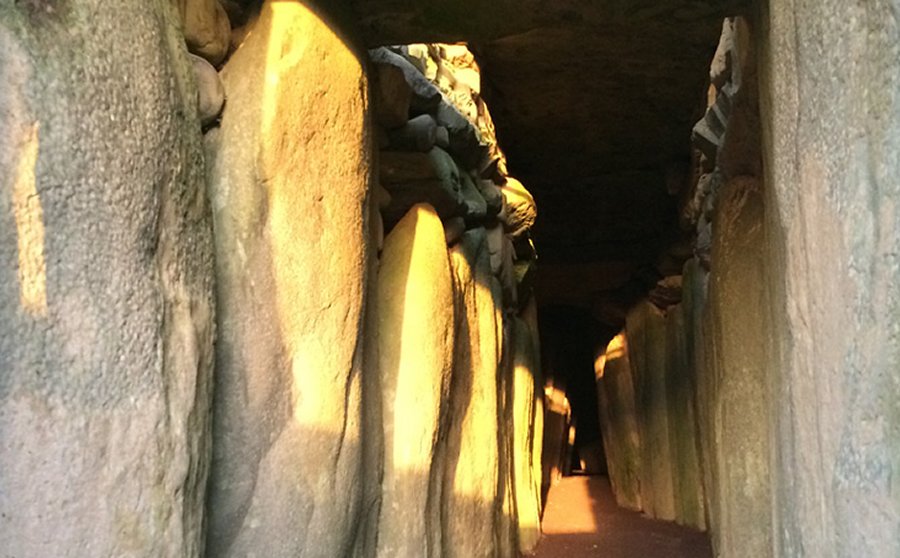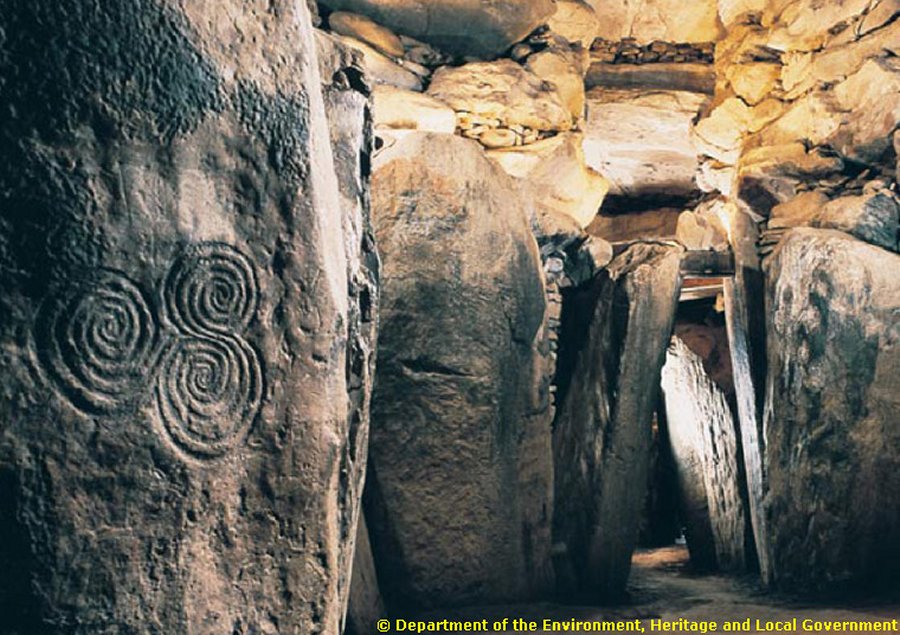MessageToEagle.com – In Ireland, the chambered round cairn of Newgrange with its quartz walls and with a passage aligned towards the midwinter sunrise was placed inside a circle of over thirty massive blocks of stone. It is a fascinating ancient construction located about 26 miles north of Dublin, Ireland.

The gigantic Neolithic tomb of Newgrange (in Irish: Si An Bhru) is one of the greatest prehistoric monuments in the world, which was probably constructed about 5,100 years ago. The structure is older than the Great Pyramid of Giza and the Stonehenge enormous trilithons.
First written references to Newgrange appear as early as 656 AD in medieval Irish annals and during the Roman times, Newgrange was already a ruin.

It is believed that the ancient Celts considered the place as an abode of spirits and a former home of their mythological ancestors “the peoples of the goddess Danu” (Tuatha Dé Danann). Danu was a mother goddess associated with Anu, another Celtic mother goddess who sponsored fertility and prosperity in the land. Some Celtic traditions say that Newgrange belonged to the Daghda (“ the good god”).
The Celts believed the abandoned prehistoric tombs such as Newgrange, were portals (‘sidh’) to the mysterious and dangerous Otherworld, with its subterranean realms and hidden places within the hills.
Newgrange, which has a diameter of about 264 ft, is almost circular. Stones layered with turf form the Newgrange’s mound, which is surrounded by exactly 97 large stones, the so-called ‘kerbstones’ (curbstones), some of them are richly decorated.
See also:
World’s Oldest Moon Map Carved Into Ireland’s 5,000 Year-Old Tomb At Knowth
‘Lios na Grainsi’ – Ireland’s Largest Stone Circle
Mystery Of The Black Irish People: Who Were They?
More Fascinating Ancient Civilizations And Places
Surrounding the Newgrange mound is a ring of 12 standing stones, which are up to 8 feet in height. Initially, there were probably approximately 35 such upright stones but they were destroyed or removed over time.
Newgrange is famous for a spectacular phenomenon that takes place at the site every year for a few days around the 21st or 22nd December. The entrance to the Newgrange passage tomb contains a doorway with two standing stones and a horizontal lintel.
Above this doorway is the ‘roof box’ or ‘light box’ and every year after 9 am (on the early morning of the winter solstice – the shortest day of the year) – the newly risen sun sends a shaft of sunlight through the Newgrange ‘light box’, creating a narrow beam of light illuminating the central chamber located at the back of the tomb.
The phenomenon lasts 17 minutes and the beam of light slowly disappears and the chamber is dark again.
It is commonly agreed that Newgrange was not built by the Iron Age Celts but how old it really was, it was unclear.
Finally, Professor O’Kelly excavated and restored Newgrange from 1962 to 1975. He discovered that those who built the Newgrange deliberately oriented the passage so that each year around midwinter, the rays of the rising sun would shine through a special aperture to illuminate the chamber.
The stone chamber and mound at Newgrange in Ireland has a ‘light-box’ allowing the sunrise to be glimpsed briefly on a midwinter day.
According to radiocarbon dating conducted by O’Kelly, Newgrange was constructed in the last centuries of the fourth millennium BC, probably around 3200 BC.
The Newgrange monument’s primary functions as a tomb, an astronomical observatory or an ancient temple that celebrated the union of the Sun with Mother Earth, are often disputed.
Copyright © MessageToEagle.com All rights reserved. This material may not be published, broadcast, rewritten or redistributed in whole or part without the express written permission of MessageToEagle.com
Expand for references





